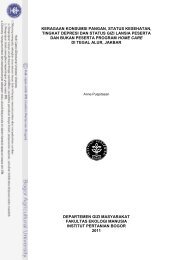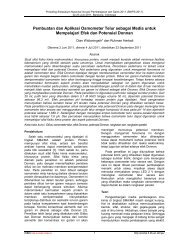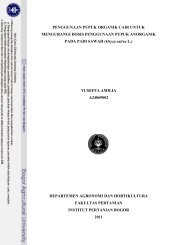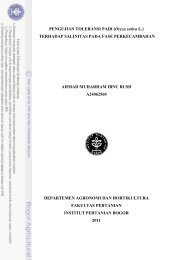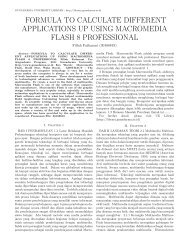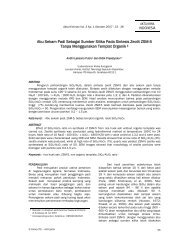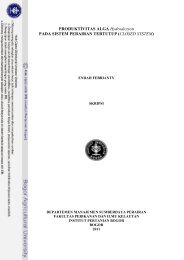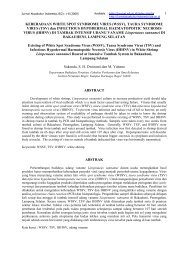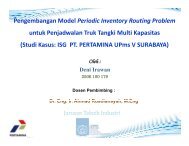Labour Cost Accounting
Labour Cost Accounting
Labour Cost Accounting
You also want an ePaper? Increase the reach of your titles
YUMPU automatically turns print PDFs into web optimized ePapers that Google loves.
<strong>Labour</strong> <strong>Cost</strong> <strong>Accounting</strong> 399<br />
(2) Priest Man Bonus Plan: Under this plan, standard performance is fixed by the management and<br />
committee of workers. The group of workers get bonus when actual performance exceeds the standard<br />
performance irrespective of individual's efficiency or inefficiency.<br />
(3) Towne's Gain-sharing Plan: Under this plan, bonus is calculated on the basis of savings in<br />
labour cost. The group of workers get bonus when actual costs is less than the standard costs, one-half of<br />
the savings is distributed among workers including foremen in proportion with the wages earned.<br />
(4) Scanlon Plan: Scanlon Plan is designed with the chief aim of reducing the cost of operations in<br />
order to increase the production efficiency. This plan is generally applicable in industries where the<br />
operation cost is high. Under this scheme, bonus is determined on the basis of standard costs or w~.stages<br />
and percentage of the reduction in operation cost.<br />
Indirect Monetary Incentives<br />
Incentive schemes are regarded beneficial to both employers and workers. In this regard, under<br />
indirect monetary incentives by giving them a share of profit and introducing co-partnership schemes or as<br />
they have become partners in the business in order to make a very profitable enterprise.<br />
Profit Sharing: Profit sharing and bonus is also known as Profit sharing bonus. Under this scheme,<br />
there is an agreement between the employer and employee by which employee receives a share, fixed in advance<br />
of the profits. Accordingly profit sharing bonus refers to the distribution of profit on the basis of a certain<br />
percentage of one's monthly earnings. The amount to be distributed depends on the profits earned by an<br />
enterprise. The proportion of the profits to be distributed among the employees is determined in advance.<br />
Co-partnership: This system provides not only a worker to become partner in the business but also<br />
to share in the profits of the concern. There are different degrees of partnership and share of responsibilities<br />
allowed to the workers to take part in its control.<br />
Non-Monetary Incentive Schemes: Under this system, employees are provided better facilities,<br />
instead of additional monetary payments. Some of the examples of non-monetary incentives are free<br />
education for children, rent free accommodation, medical facilities, canteen facilities, welfare facilities,<br />
and entertainment facilities etc.<br />
QUESTIONS<br />
1. What are the important objectives of ideal wage system?<br />
2. Describe the factors to be considered for an ideal wage system.<br />
3. What are the different methods of wage payment?<br />
4. Critically examine the advantages and disadvantages of time wage system.<br />
5. What are the differences between time rate system and piece rate system?<br />
6. What do you understand by piece rate system? Discuss the merit and demerits of piece rate system.<br />
7. What do you understand by Taylor's Differential Piece Rate System? Explain its significance.<br />
8. How are incentive wages calculated under Halsey and Rowan incentive schemes of wage payment?<br />
9. Explain the different types of time rate system.<br />
10. Differentiate between the Differential piece rate system of Taylor and Merrick.<br />
11. What do you understand by Incentive scheme of wage payment?<br />
12. Write short notes on :<br />
(a) Halsey Plan. (b) Rowan Plan. (c) Emerson's Efficiency Plan. (d) Halsey-Weir Plan. (e) Gantt Task Bonus Plan.<br />
(f) Barth's System.<br />
13. What do you mean by collective bonus plan? Explain the types of group incentive plans.<br />
14. From the following particulars, calculate the earnings of workers X and Y under Piece Rate System and Taylor's<br />
Differential piece rate system :<br />
Standard time allowed = 10 units per hour<br />
Normal time rate per hour = Re.l<br />
Differential to be applied:<br />
80% of piece rate when below standard




